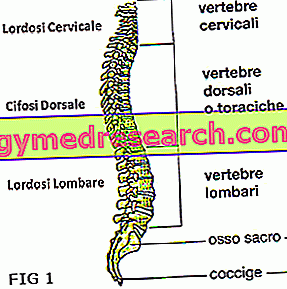By Dr. Antonio Parolisi
Today there are so many nicknames that are attributed to the fat around the waist: there are those who call it bacon, those who love, those who roll or simply those who say "the belly" ...
Currently a large slice of the fitness industry enriches capital grounds with products that aim to train the famous abdominal muscles in order to have the squares or the infamous turtle.
There are people around who have the "nerve" to say that doing 10 minutes a day of a specific tool for these muscles can reduce the waistline to sculpt the abdominal Dexter Jackson ...
The thing that unfortunately everyone experiences, is the reality of the facts, which is very different and the "belly" is always there.
Unfortunately, even in the gym you make big mistakes. It is enough to witness the training of a neophyte who asks to want to lose weight and highlight his abs, when he is presented with a training program, perhaps with a split routine, then on alternate days with different muscles, but the work for the famous abdominals is always present, almost as if it were a blessing from the god of Fitness.
We even read on some cards: "abdominals at will", almost as if it were lettuce after lunch ...
Not to mention the fact that they train high, low abdominals and keep strong, I also read the "central abdominals" on the Internet.
The problem does not exist until the disappointment is the only one to dominate; in the sense that the "fat from the belly does not melt" but at least did not cause damage.
The point instead is that often this craze of abdominal muscles can bring serious problems when instead one is convinced to do a good thing.
Let's try to understand.
The spine, without going too far into the anatomical details, has curves that serve to distribute the load on all its components, the vertebrae with the intervertebral discs (the shock absorbers).
There is a law in biomechanics that wants that, the resistance on the column is equal to the number of squares curves + 1, that is R = (Nc x Nc) +1. So if I have 100kg on the column like when I perform a squat, if my curves are well organized I will have 3 large curves, 2 lordosis (cervical and lumbar) and 1 kyphosis (the dorsal). So I will have R = (3 x 3) +1 or 3 x 3 = 9 +1 and the resistance will be 10. So the column will have a resistance to the famous 100kg equal to 10.
If I reduce a curve from the column, like when I sit or when I put my belly in, flexing my hip retracting my pelvis and lumbar lordosis reduces or disappears, this takes a curve from the famous equation and therefore the result will be R = ( 2 x 2) +1 or 5. So removing a curve the column will offer resistance to the famous 100kg equal to 5 or 50% less. It is as if a car shock absorber is 50% charged. Try to take holes or load it and see what happens.

Physiologically, each individual should have an anterior convex curve called a cervical, a curve with a convexity called a dorsal posterior and a curve with an anterior convexity called lumbar. (Fig.1)
Unfortunately due to postural alterations, spoiled attitudes, important traumas, the column undergoes changes in the morphology of its structure and often the curves of the spine (column) are reduced or increased creating problems in the management of the distribution of loads along the vertebrae. Results? Often pain and suffering.
Working the abdominal muscles with crunch type exercises can be a valid help for those with an attitude of increased lumbar lordosis. This is because a person who has a lumbar hyperlordosis has an anteversion of the pelvis, presenting the typical posture of those with high buttocks (figure 2)
This means that the abdominal muscles are forced to work in an eccentric condition, so they often tend to weaken and in parallel, the lumbar and related muscles are forced to work in concentric and this can shorten them by creating pressure anomalies on the discs and vertebrae (figure 3 )

In this case, for example, doing work on the strengthening of the abdominal muscles can often be a valid aid in the correction or in any case in easing tensions. Certainly exercises of the iperextension type would be counterproductive because they would make even those already tense muscles (lumbar and extensor in general) even stronger and could retract them even more.
The tricks recommended during all the exercises would be to keep the feet on the bench during the bench press, or to keep the feet on a step when doing the slow forward, in short, trying to work by reducing the lumbar lordosis to a physiological condition where the tensions front and rear are well balanced. Doing stretching for the lower back if necessary. (Fig4)
Continue: part two »



